Welding
Helpful Information About Potential Welding Careers
-
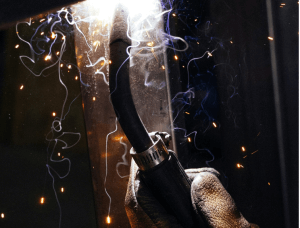
Learn What Industries Offer Opportunities for a Successful Welding Career
Welding is a critical skill that supports a wide range of industries, from construction and manufacturing to aerospace and energy. Without skilled welders, essential structures, machinery, and transportation systems wouldn’t be possible. As industries continue to grow and evolve, the demand for trained welders remains strong, offering countless career opportunities for those with the right skills. In this blog, we’ll explore the industries that rely on welders, highlighting the vital role they play and the exciting career paths available in this essential trade.Why Welding Is an Essential Skill Across Industries
Welding jobs are a fundamental trade that serves as the backbone of countless industries, making it one of the most versatile and in-demand skills in the workforce. From towering skyscrapers and massive bridges to intricate aerospace components and high-performance vehicles, welding is responsible for creating and maintaining the structures and equipment that keep the world moving. Beyond construction and manufacturing, welders play a crucial role in emerging industries like renewable energy and advanced technology, ensuring innovation and progress continue. With advancements in automation and specialized welding techniques, the need for skilled welders is only growing, offering job security and career advancement opportunities across a variety of fields.Industries That Rely on Welders
1. Construction and Infrastructure
The construction industry depends heavily on welders to create and maintain buildings, bridges, and other essential infrastructure. Welders work on steel frameworks, reinforce concrete structures, and ensure the stability of high-rise buildings. Public infrastructure, such as highways, tunnels, and pipelines, also requires skilled welders to maintain and repair metal components. As cities expand and new projects develop, welders remain at the forefront of this industry.2. Manufacturing and Fabrication
Manufacturing is one of the largest industries for welders, offering employment in factories that produce everything from household appliances to industrial machinery. Welders work with metal components to assemble products, reinforce materials, and ensure durability. Many modern manufacturing facilities use automated welding processes, but skilled welders are still needed to oversee production, inspect welds, and handle intricate tasks that machines cannot perform.3. Automotive and Transportation
Welders play a significant role in the automotive industry, helping to build and repair cars, trucks, and even public transportation systems like buses and trains. Every vehicle contains welded components that contribute to its safety and efficiency. Welders also work on custom automotive projects, such as race cars and specialty vehicles, creating high-performance frames and exhaust systems. With the rise of electric and autonomous vehicles, the demand for specialized welding skills in this field is increasing.4. Aerospace and Aviation
Precision welding is crucial in the aerospace industry, where aircraft and spacecraft require strong, lightweight, and durable materials. Aerospace welders work on airplane fuselages, jet engines, and satellite components, using advanced techniques like TIG welding and laser welding to ensure structural integrity. The high standards and safety regulations in aerospace welding make this a challenging but rewarding career path.5. Shipbuilding and Maritime Industry
The maritime industry depends on welders to build and repair ships, submarines, and offshore drilling platforms. These structures must withstand extreme weather conditions and the constant wear of saltwater exposure. Some welders in this field specialize in underwater welding, a highly skilled and high-paying profession that involves working in submerged environments to repair ship hulls, pipelines, and offshore structures.6. Energy and Power Generation
Welding is essential in the energy sector, helping to construct and maintain pipelines, power plants, and renewable energy systems. In the oil and gas industry, pipeline welders work in challenging environments to ensure the safe transportation of fuel. Meanwhile, the renewable energy sector relies on welders to build wind turbine towers, solar panel structures, and hydroelectric power facilities. As the world shifts toward sustainable energy, welders will continue to play a crucial role in shaping the future of power generation.7. Agriculture and Heavy Equipment
Farms and agricultural businesses rely on welders to repair and maintain heavy machinery, including tractors, plows, and irrigation systems. Welding is used to build sturdy equipment that can endure rough conditions and heavy use. Skilled welders in this industry ensure that farmers and construction workers have the durable tools they need to operate efficiently.8. Military and Defense
The military relies on welders to build and maintain vehicles, ships, aircraft, and infrastructure used in national defense. Military welders may work on armored vehicles, aircraft carriers, or even weapons systems, ensuring they meet strict durability and performance standards. Some welders in this industry work directly for government agencies, while others are employed by defense contractors.How to Get Started in Welding for These Industries
For those interested in a welding career, proper training and certifications are essential. Many industries require specialized welding skills, so gaining hands-on experience and obtaining certifications from organizations can open doors to high-paying opportunities. Enrolling in a welding training program, such as the one offered at Advanced Career Institute, can help aspiring welders build a strong foundation and gain the technical knowledge needed to succeed in various industries.Why Welding Is a Strong Career Choice
Welding jobs offer security, career advancement, and excellent earning potential. As industries continue to expand and evolve, the demand for skilled welders remains steady. Whether working on massive infrastructure projects, high-tech aerospace components, or cutting-edge renewable energy systems, welders have the opportunity to build a fulfilling career in a field that keeps the world running. From construction and manufacturing to aerospace and energy, skilled welders are needed in nearly every industry. Welding jobs provide stability, diverse career paths, and opportunities for professional growth. If you're considering a hands-on career with strong earning potential, welding could be the perfect choice for you.Start your welding journey today with Advanced Career Institute and gain the skills needed to work in these essential industries!
-
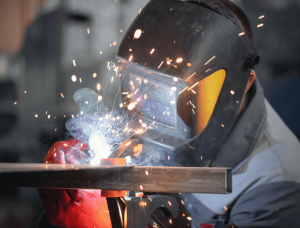
How to Become a More Efficient Welder
Whether you’re an experienced welder or just graduated from welding training, there are standard welding practices every welder should follow. Along with this, welders should be aware of common mistakes across the industry. Read more about some of the most common welding mistakes within the industry and how you can avoid them in the future.Lack of Preparation
Lack of preparation in any industry is unprofessional and should not be taken lightly when prepping to weld. Thoroughly preparing the metal you will be welding to remove any paint, rust, dirt, and other foreign substances is vital in ensuring the surfaces are clean. Failure to do so could lead to a weak weld on the pieces of metal. Cleaning isn’t the only major thing you should prep for before welding. Knowing the type of metal and its measurements is important in knowing how to weld the pieces together and if they will need multiple passes. Knowing the measurements of the specific metal types you are welding and adequately cleaning them will help you better prepare before welding. This knowledge will also help you determine a plan of action for how to execute the welds. Many of the other common welding mistakes stem from a lack of preparation.Safety Precautions
Safety is the top priority in welding and almost every occupation today. Working with flammable gases, sharp metal, debris, and a torch daily presents welders with a lot of liability. Making sure you know the proper safety precautions before diving into a weld can prevent accidents and even be lifesaving. To begin with, some of the most common precautions are personal protective equipment (PPE) pieces. These include work boots (preferably steel-toe), hearing protection, welding shield/helmet, and safety glasses. Ensuring you have the basic safety requirements is always an easy place to start when taking proper safety precautions. Your preparation before welding will help with safety too! Since you have prepared for what you are welding, you will know the appropriate types of welds needed for the job. Preparation goes a lot farther than just knowing what you will be welding.Wire and Electrode Selection
Before welding, it is essential to choose the correct wiring and electrodes needed for the job. This is regardless of the type of welding you will be doing (the three most popular are stick, flux-core, and MIG). Electrodes and wires are suited for different welding applications and need specific types to be effective. Knowing which types work with the different welds you are performing can save you from re-doing any wrong ones.Interpass and Preheat Temperatures
Like many common appliances and machinery, welding machines must be preheated before using them. Failure to preheat your machine and the metal area surrounding the weld to the proper temperature before conducting the weld can lead to problems and create more work for yourself. Proper preheating leads to fewer cracks and helps prevent future issues with the weld. Choosing the correct interpass temperature will help to solidify and correctly conduct your weld between the metals. Knowing what temperature is needed for the thickness and type of metal you are welding will help your weld and your preparation. Having correct preheat and interpass temperatures can save you from having to re-do a weld and other headaches that may result. Proper welding training can be a huge step in becoming a successful welder and avoiding these common welding mistakes. You will learn the proper preparation and techniques to weld various metals correctly. Qualified students can apply for tuition assistance programs and work with our job placement team to find openings with local and national employers! Get started in your welding career today! Call our admissions team at 866-951-4821 to learn more about enrolling with ACI! -
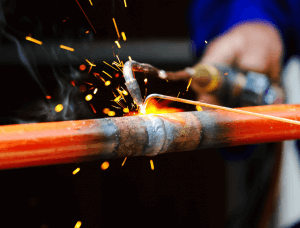
Is Welding the Right Career for You?
Welding is exciting. There’s nothing quite as exhilarating as powering on your torch and watching the sparks fly ablaze while you meld together whatever material is in front of you. Eventually, the individual pieces of metal you began with are now a single product, conceived by the influence of your own hands. It’s surely a satisfying process to complete; there’s no wonder why many seek to turn the craft into a professional career. With proper training, anyone can pick up the skills needed to do just that. But how do you know if the trade is the right fit for you? What makes a good welder? Here are a few insights into what it takes to find success in welding.Welding Might Be the Career for you if…
- You prefer physical work over sitting at a desk: Welding is a hands-on craft that is very much about physical labor. There’s a good chance you’ll never get to sit back in a cushy desk chair while on the job.
- You don’t want to attend college or university but still want a fulfilling career: A 4-year college degree isn't usually a requirement for finding success in welding. Additionally, welding certifications tend to be more affordable and quicker to complete. You can finish ACI’s Advanced Welding Course in just 38 weeks!
- Job sustainability is important to you: Welding jobs are always in demand. In fact, the manufacturing of more than 50% of U.S. products involves welding. This line of work is unlikely to go away any time soon, so professionals can remain confident in their ability to find their next project.
- An outdoor work environment appeals to you: Many jobs will require working in outdoor conditions. Hence, you should be sure you can handle the sun and fresh air all day if you’re considering this profession.
- You are interested in different industries: There are various opportunities for those who complete their welding training. A few industries you could work in include Construction, Automotive, Electric, Aerospace, Agriculture, Manufacturing, and many others.
- You like to travel: Welders are sought after all around the world. Furthermore, welding practices stay fairly consistent across borders, so travel enthusiasts can easily take on stints while on the go.
- You don’t mind working for long periods: Oftentimes, projects can keep you on your feet for hours at a time. Both mental and physical endurance is important for welders to perform at their best.
Characteristics of a Successful Welder
Anyone can become a professional welder with the right training and work ethic, but some traits can help aspiring tradespeople get farther ahead in their field:- Detail-oriented
- Self-motivated
- Knowledgeable in a variety of skills
- Has a solid understanding of the tools and equipment used on the job
- Keeps up to date on the latest industry news
- Puts safety first
- Capable of problem-solving
- Knows how to read blueprints and understands the role of welding in a project
- Understands the math and science behind their craft
- Has good interpersonal skills
If you are ready to start your welding career, contact us today!
-
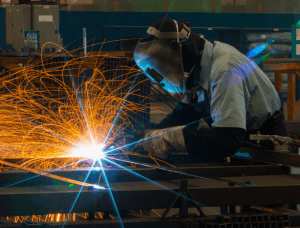
Building a Safer Future in Welding
Updated June 2025 Welding can be an extremely exciting career, but like with any hands-on job, it’s important to ensure safety during work hours. Welding poses serious hazards such as burns, electric shock, toxic fumes, and eye damage — all of which can lead to long-term health issues. With these in mind, it’s important to prioritize welding safety not only for the individual but also ensure a more efficient, compliant, and professional work environment. This blog will cover several points on how to put your safety first in the welding industry by talking about essential safety, daily tips, and long-term safety practices. Why Does Welding Safety Matter? To explain why you should always practice welding safety it’s important to know what can happen if someone doesn’t make this a priority. According to the U.S. Bureau of Labor Statistics, around 96 welders lose their lives each year due to workplace hazards. This could include burns, electrical shocks, or even amputation of fingers and toes. Welding safety isn’t just about your own personal safety, it’s also about the safety of those working around you as well. Ensuring that you’re following proper safety procedures for everyone in the workplace throughout your workday can create a safer, more efficient workplace. What Are The Most Important Welding Safety Tips? We’ve talked a lot about the bad things that can happen in the welding industry, but there are ways to prevent injury and fatalities in the workplace. From basic personal protective equipment tips to managing ventilation and toxic fumes, we’re going to give you a rundown of all of the ways to stay safe and enjoy your career in welding.Wear the Right PPE
Personal protective equipment, or PPE, is extremely important for welders and will reduce the risk of injury in the workplace. It’s important to protect not only your eyes and face, but also your lungs, skin, and body from fumes, heat and electric shock. To ensure that you’re practicing safe welding, you’ll want to have the following pieces of protective equipment:- Safety Glasses
- Face Shield
- Respirators & Fume Extraction Systems
- Long Heat-Resistant Gloves
- Ear Protection
- Rubber-Sole Boots
Maintain Your Equipment
Routinely checking the equipment being used can ensure that safety concerns are addressed, and workplace accidents happen much less. Even if the equipment was put back in working condition, that doesn’t guarantee it will remain safe. Keeping your area clean is also an important part of maintaining your equipment. This will allow your equipment to not only be safe but will also allow you to function better at your job.Stay Aware of Your Surroundings
Being aware of your surroundings is a critical part of staying safe in any welding environment. Working in this field involves high temperatures, heavy equipment, flammable materials, and other workers operating nearby. All these things could present potential hazards for you. Staying alert and constantly scanning the area, welders can avoid several hazards:- hot surfaces,
- trips and falls over cords and tools
- fire risks or gas leaks.
Practice Fire, Electrical & Ventilation Safety
Fire, electrocution, and toxic fumes are major hazards in the welding industry and are the leading causes of injury in the workplace. Maintaining safety precautions against these types of injuries is very important. One of the easiest ways to prevent fumes and gases from causing harm to welders is to ensure proper ventilation with fans and exhaust vents. It’s also pivotal to wear the proper PPE when working around harmful gases. When it comes to welding, fire and electricity are common tools but can be harmful if not used with the proper safety. In arc welding it’s important to remember that you’re using high voltage electrical equipment that can get extremely hot during the welding process. This means that wearing the proper protective equipment, keeping your station dry, and free of flammable materials are the best ways to prevent injury. Welding is a rewarding and hands-on profession, but with that comes the responsibility of putting safety first – every single day. From wearing the right PPE and keeping your equipment in top shape to staying aware of your surroundings and respecting the risks of fire, electricity and toxic fumes, each step you take toward safety is a step toward a longer, healthier career. Practicing proper safety not only protects you but also builds a stronger, more reliable workplace for your team. When safety becomes part of your daily routine, you’re not just following rules – you’re shaping the future of the trade. Interested in learning welding the safe, professional way? Let’s get you enrolled in our welding program! Contact us today to get started! -

School is back in session for you too!
It's back to school time for families across the country and it can be back to school for you too! There is no better time to hit the books again. While your kids are trying to move on to the next grade level, you will be moving on to your next career! At Advanced Career Institute (ACI), you can take the first step to a new career in trucking or welding. Still not sure? Check out our list of great reasons to start your training today!- Short Training Time - At ACI, our goal is to get you trained and out in the workforce in a time frame that gets you earning the money you deserve quickly. If you go back to school with ACI, you'll be off to the workforce in 4 weeks for trucking and 38 weeks for welding.
- Job Placement- Going back to school can be scary because of the uncertainty of career placement once you graduate. However, ACI takes care of this worry for you! ACI offers job placement assistance that includes helping your job search, practice for interviews, and spruce up your resume.
- Jobs In Demand - Currently, the trucking industry is one of the most in-demand career paths on the market today. This means jobs are just around the corner for you once your training is complete. Additionally, as a new school year starts, opportunities for school bus drivers will also emerge.
- Tuition Assitance Available - If you go back to school with ACI, you have the possibility to be eligible for financial aid assistance. This assistance can help pay for your training and possibly take away the stress of tuition for you and your family.
- Inspire Your Children- Children look up to and admire their parents. If they see mom and dad are working hard in school, it can encourage your children to do their best in school too! This can turn into wonderful bonding time.
-
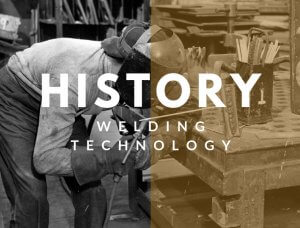
Understanding Welding and its Beginning
Welding is an ancient trade. Our earliest known welded artifacts are gold boxes dating back to the Bronze Age, according to a publication by Miller Welds. Little changed for the trade for nearly two thousand years. From the skilled efforts of respected Viking blacksmiths who forged weapons and shod horses for their raiding trips, until the late eighteenth century, welding technology remained largely static. We didn't see significant changes in the trade until the early 1800s. Worldwide efforts and advancements during those few centuries changed the process swiftly.The 1800s: Patents and Technology
Major developments in welding technology began in England. There, Edmund Davy discovered acetylene (C2H2) in 1836. Acetylene is a colorless gas used for both welding and metal cutting. The electric generator was an important part of machinery invented mid-century, and arc lighting became the popular method among welders. Gas welders and cutters were developed later in the century as well. Finally, arc welding with the carbon arc and metal arc was developed. Resistance welding (the joining of metals by applying pressure and passing electrical current) became the practical process. Carbon arc welding remained the popular welding method through the early 1900s. Meanwhile, in Detroit, C.L. Coffin was awarded the first U.S. patent for an arc welding process.The Early 1900s: WWI & WW2
During the early 1900s, resistance welding processes were being developed such as seam welding, spot welding, and flash butt welding. Each process required tradesmen to garner new skills and technique. With these new skills came new opportunities, particularly for the military. The onset of World War I brought tremendous demand for weapons and armament. Welders were pressed into work as a commodity to take care of general machinery and ships. According to Welding History, the first all-welded hull vessel was the HMS Fulagar, of Great Britain. They go on to state, "because of a gas shortage in England during World War I, the use of electric arc welding to manufacture bombs, mines, and torpedoes became the primary fabrication method." Welders became highly prized tradesmen among the armed forces. In 1919, the American Welding Society was founded by 20 members of the Wartime Welding Committee of the Emergency Fleet Corporation, under the leadership of Comfort Avery Adams. That same year alternating current was invented. Stud welding was developed at the New York Navy Yard in 1930. This method quickly became popular among shipyards and construction sites. This method of welding still remains popular today. Around this time the submerged arc welding process took hold. It was developed by the National Tube Company and was designed to make the longitudinal seams in pipes, for a pipe yard in Pennsylvania. In the 1940s Gas Tungsten Arc Welding (GTAW) "was found to be useful for welding magnesium in fighter planes, and later found it could weld stainless steel and aluminum," buy Welding History. They go on to say, "the invention of GTAW was probably the most significant welding process developed specifically for the aircraft industry and remained so until recently, with the Friction Sir Weld process of the 1990s." Again, welders found themselves highly prized with the military. In 1948, The Ohio State University Board of Trustees established the Department of Welding Engineering as the first of its kind for a Welding Engineering curriculum at a University.Today:
Laser welding would be welding's most recent advancement. Laser beam welding "is mainly used for joining components that need to be joined with high welding speeds, thin and small weld seams and low thermal distortion. The high welding speeds, an excellent automatic operation, and the possibility to control the quality online during the process, make laser welding a common joining method in the modern industrial production," according to Rofin. Laser welding is especially appropriate for modern delicate work, with applications in aerospace and IT. Welding has come a long way since the Bronze Ages. These highly skilled tradesmen and women are in great demand during both in the past and present. Exciting new advancements like laser welding keep the industry both exciting and relevant. To learn more about welding training, contact Advanced Career Institute.

